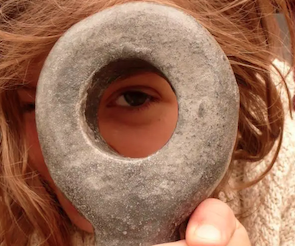In terms of references for this radio project, as a group we decided we wanted to use multi media references to each portray how we have interpreted the ideas we created for the piece. Making sure to references music, films, artworks, etc. This diversity in references means that when it comes to making the radio piece, not only will each member of the team understand everyones ideas of what they want to create, but it also allows for this plethora of styles and artworks to be used within our work. Making it overall a more stimulating and interesting piece to listen to.
Below are two of my references-
Cassetteboy- Fly Me To New York. -Music/sound collage.
I chose ‘Fly Me To New York’ as a references for this project, less for because of what the piece is saying but more because of it’s collage aspect. Going into this project this idea of collage was a strong theme that as a group we wanted to work around and so I thought this music collage is a great reference as it does it so well, whilst also portraying a message very clearly. Having completed the script now, collage was indeed a huge aspect to it as I used three pages of writing by Zain, which I then cut up to form an entirely new concept and script idea.
Takashi Ito- Spacey. -Short film
Although quite a different piece of work, forming entirely around the visuals, I thought to include Takashi Ito’s ‘Spacey’ for its surrealism and constant looping. This artwork is incredibly disorientating and as you watch it, it becomes harder and harder to place yourself within it and grasp an understanding on what’s going on. This lack of realism is something again, we knew we wanted to include in our radio piece, we wanted to portray a very surreal, abstract show that the listener becomes lost in, never really having a grip on what is going on. As well, this cyclical structure of starting in one place and ending up back there by the end is another aspect included in our script. I made the conscious decision to connect the end to the beginning by cutting up sections from the same block of writing and separating it, placing one sentence at the beginning and the other at the end, both set in the same location. The reasoning behind this cyclical structure is so that as a listener, who will become lost, you can almost jump into the show at any point, trying to grasp an understanding on what’s going on but never fully doing so, therefore playing on this idea of perception.
As well as my own references, here are some from other groups members.
Headache – That Thing with the Rabbit- https://youtu.be/s5BsP8eRqUE?si=8WgQ8PAhLpeqysxa. (MUSIC)
Chris Morris, Blue Jam- https://youtu.be/E8VG6HUimsQ?si=fnUv_Z740AEkBJAK (SPOKEN WORD)
Having these group references makes it so much easier to grasp an understanding on how we want the outcome of this radio piece to be, it allows for a look into each persons interpretation on our ideas. -This in general is just one way were working with perception.
This first reference- ‘That Thing with the Rabbit’ is a great reference as it combines music with this speech that all connects but doesn’t make much sense as the listener. This has a similar effect to what we want to create- a lack of awareness. The speech itself in the video is represented through text messages which are cut up and then assembled together, which makes for a story to be told, but one that doesn’t quite make sense, it almost does, but it doesn’t. This concept of having each part of the speech connect, but not be understood, is one that I adopted when reassembling our script. It all connects but doesn’t give enough context to make it comprehensible. Similarly with ‘Blue Jam’ the randomness of it is what makes it so beautiful and unique. He is telling these quite arbitrary short stories that somehow become so gripping and interesting because of the way he chooses to tell the story.
Overall these references have had a very helpful part to play in not only creating the script and final piece,allwoing different opinions on the work to be represented, opening up a new level of communication throughout the group.
